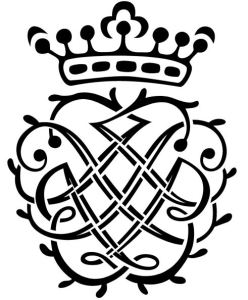Bach and the Italian Concerto
Academy of Ancient Music
Milton Court Concert Hall, 15 February 2017
Bach: Concerto for oboe d’amore in D major
Vivaldi: Concerto for violin in G minor
Albinoni: Concerto for oboe in D minor
Vivaldi: Concerto for two violins in A minor
Bach: Italian Concerto
A Marcello: Concerto for oboe in D minor
Groups like the Academy of Ancient Music often perform with soloists drawn from their own ranks, with understandably excellent results. This was one such occasion, when four of the AAM’s regular orchestral players stepped into the soloist limelight. The focus was on the influence of Italian music on Bach, with a sub-plot of the Italian music that Bach transcribed for harpsichord organ. Indeed Alistair Ross, the AAM’s principal keyboard continuo player, suggested during the pre-concert talk that he could perform the entire concert programme on his own on organ and harpsichord.
The instrumental focus of the concert was on the oboe and oboe d’amore, played by Frank de Bruine. He opened with the latter instrument in Bach’s Concerto for oboe d’amore in D, the husky tone of the oboe d’amore (pitched lower than the normal baroque oboe) revealing exactly why it was one of Bach’s favourite instruments. He also played oboe concertos by Albinoni and Marcello, the latter one of the best known of the genre, with its gorgeous central movement with its sensuous melody supported by repeated chords from the orchestra.
After the opening d’amore concert we heard Vivaldi’s G minor Violin Concerto, with the AAM leader Bojan Čičić excelling as soloist, bring an outstanding sensitivity to the melodic line and a well-judged vigour and energy to the consort. He was later joined by Rebecca Livermore for Vivaldi’s Concerto for two violins in A minor, the pairing of the two violins revealing a delicate balance and interplay.
This was followed by the real Italian Concerto, Bach’s solo harpsichord homage to all things Italian, including the concerto form. Using the two keyboards of the harpsichord to represent the solo and tutti sections of the concerto form, Bach here demonstrated his extraordinary ability to absorb other national styles. Alistair Ross is usually hidden behind a harpsichord or organ music desk towards the back of the orchestra, so this was an ideal chance to him to display his solo credentials. That said, the role of keyboard continuo player is far more complex than most people realise – few understand that, despite all the notes that flow from the keyboard continue, they usually only have a single line of music (like their companion cellist) plus a few obscure looking numbers to base what amounts to free improvisations upon.
His playing of the Italian concerto was one of the highlights of the evening. He plays in a manner that writers of the time described Bach’s own playing, noting that regardless of the complexity of what he was playing, you couldn’t see his fingers move. This sensitive and non-demonstrative mode of playing is ideal, and Alistair Ross’s composed demeanor and lack of self promotion was a marked contrast to several harpsichord players.
This was and excellent evening of fine music making, helped by the introductory talk given by the three main soloists. Although Frank de Bruine and Bojan Čičić were both billed as directors, it was the latter who had the lions share of the task, very clearly inspiring his fellow AAM players. The concert deserved its sell-out status.
